AnandTech Article Channel |
- Asustor 6 Series: A Fresh Approach in the NAS Market
- The Phantoms of NZXT
- Thermaltake Brings a Little Sophistication
- Antec's Stunning New Value and Curious New Direction
- Polaroid Reveals World's First ILC Android Camera
- Rosewill Expands, Consuming Everything In Its Wake
- Lenovo ThinkCentre M92z: Anti-Glare Touchscreens
- Lenovo’s Erazer X700 Gaming Desktop
- Lenovo IdeaPad Y400/Y500 Gaming Notebooks (with SLI!)
- Lenovo’s Horizon All-In-One/Table PC
- Lenovo Announces IdeaPad Yoga 11S
- Lenovo ThinkPad Helix Demo
- NVIDIA’s Annual GPU Rebadge Begins: GeForce GT 730M and GeForce 710M Partial Specs Published
- Razer Announces 10.1" Edge Gaming Tablet with Ivy Bridge, Kepler, Windows 8
- Plextor/LiteOn Enters the eMMC Market
- Plextor's Dabbles in TLC NAND
- Plextor's M5M mSATA SSD
- Hands On with Plextor's NGFF SSDs
- Plextor Introduces M5 Pro Xtreme SSD
- Broadcom Unveils 4Kp60-capable BCM7445 SoC for Home Gateways (STBs)
| Asustor 6 Series: A Fresh Approach in the NAS Market Posted: 09 Jan 2013 12:48 AM PST We had the chance to meet up with Asustor at CES yesterday. Reviews of some of their offerings had popped up on various websites, and my initial impression was that Asus was aiming to get a toehold in the fast growing NAS market. I wasn't expecting much, but I was in for a pleasant surprise. Asustor was founded in August 2011 as an affiliate of the Asus group. It has around 70 employees, out of which 60 are in R&D, with a majority involved in software / firmware development. Even though the company is pretty new, the employees trace back their roots to QNAP and Synology. Currently, Asustor has one NAS product family, the 6 Series. All the models use the Atom D2700 2.13 GHz dual core processor with 1 GB of SO-DIMM DDR3. It is possible for end-users to upgrade the DRAM up to 3 GB. The currently available models include 2,4,6 and 8-bay models AS-60xT, where x is the number of bays, and T represents the tower form factor. Towards the end of this month, Asustor will also introduce rackmount models AS-604R (1U form factor) and the AS-609R (2U form factor) with 4 and 9 bays respectively. These models will also have 1 GB of DDR3 DRAM and the D2700 processor only. I find it hard to understand how they can manage to do RAID calculations across 9 drives with just an Atom CPU. We are trying to confirm whether there is any hardware RAID involved.
All the 6 series models have 2x GbE links, 4x USB 2.0, 2x USB 3.0 and 2x eSATA to go along with the HDMI display output port. While the 2-bay unit has an external 60W power adapter, the rest of the tower models have an internal 250W PSU. The rackmount units have internal redundant power supplies (250W for the AS-604R and 350W for the AS-609R). QNAP and Synology have been around for more than 10 years, while Asustor is relatively new. Starting from a fresh slate migh help Asustor provide modern consumers with a better suited. However, the drawback is that Asustor hasn't had time to deliver all the features available in the Synology or QNAP units. Being Atom-based units, the 6 series isn't really a candidate for value propositions. 1 GB of DRAM also sounds a bit low for multi-bay NAS units based on the Atom processors. In comparison, the LaCie 5big NAS Pro has 4 GB of DRAM and is based on the same Atom processor (D2700). In terms of software and UI, Asustor has decided to repliace the iOS experience with similar icons and layout. Most commonly required functions are easily accessible. A SDK is available for developers to produce custom apps. For example, Boxee has been ported over and can be used to decode and send HD video out thrugh the HDMI port (similar to how Thecus has developed XBMC for their Atom D2700 based NAS platforms). A private cloud solution is enabled using the Asustor apps for Android and iOS as well as Asustor's own dynamic DNS service. a Dropbox app is available to bring content stored in your Dropbox account on to the NAS and keep it synced. Unlike other NAS units with volume level encryption, Asustor has opted for folder level encryption.All virtualization needs are available with Citrix, VMWare and Hyper-V support. On the whole, the Asustor 6-series looks like a well-built NAS unit with an effective and easy to use OS in the Asustor Data Master (ADM). Reliability and performance are aspects on which we will get more information from user reports and detailed reviews in the future. I am also looking forward to Asustor expanding into the value market segment in the future. | |||||||||||||||||||||||||||||||||||||||||||||||
| Posted: 09 Jan 2013 12:29 AM PST I recently reviewed the NZXT Phantom 820 and found it to be a remarkably excellent, intelligent case, so imagine my delight in learning that NZXT is following up that success with the Phantom 630. Over the past couple of years, NZXT has increasingly been carving out a niche as a case manufacturer that produces stylized, exceptionally feature-rich cases. As a former art student it's actually interesting to see that their products have an increasingly distinctive flavor to them. Some work is done by engineers. Some work has clearly been done by people with at least a little bit of a liberal arts education, people who are having fun with their jobs. However you feel about the styling (and I did tell them I wasn't fond of the side window and grate, which uses the same style as the Phantom 820), it's hard to argue with what NZXT has on offer here. The Phantom 630 features absolutely everything the Phantom 820 did: custom illumination with a rainbow of color options, a built-in SD card reader (why does almost nobody else include this standard?), an internal 30-watt fan hub with built-in fan controller, USB 3.0 support, a switchable LED backlight for the rear port cluster and expansion slots, three removable drive cages that each feature one, two, or three drive sleds so you can include exactly the number of drive sleds you need, and support for multiple Kraken closed loop coolers. There are also toolless snaps, motherboard standoffs come pre-installed, there's a cabling channel in the motherboard tray, and the usual removable fan filters. I fully expect the Phantom 640 to include a "breakfast port," which produces absolutely fantastic omelettes with minimal preparation time. ...we will be getting the Phantom 630 in for review soon. Less exciting but still impressive was the Hale90 power supply on display, which featured the usual modular cabling along with the kinds of stylistic touches (black accents on white) that I've come to expect from NZXT. Even the internal PCB is white. What the Hale90's interesting feature is an additional lead on the main ATX 24-pin power lead. This lead plugs into the Hale90 and informs the power supply exactly how much power is being drawn off of the main lead, and this is how the internal fan is controlled. Very cool. | |||||||||||||||||||||||||||||||||||||||||||||||
| Thermaltake Brings a Little Sophistication Posted: 09 Jan 2013 12:13 AM PST For the most part I like Thermaltake, but generally they've been one of the holdouts producing glossy, ostentatious enclosures while the rest of the industry has been moving past those. So you can imagine my surprise when the producers of the Level 10 GT and its kin hit me with some more restrained designs. While the new Chaser cases aren't all the way there, they're remarkably close. There are essentially three models, with the top A71 pictured above featuring four USB 3.0 ports and a hotswap bay. From there they scale down to the smaller A41 and A31, but either way it's a pleasant change of pace. Where things get even more pleasant is their new Urban series enclosure. The Urban series enclosures are geared for silence, and they include fan control and acoustic padding standard. They're stylishly restrained and very attractive (at least in my opinion), but it remains to be seen if they'll suffer the same pyrrhic victories most acoustically-engineered cases do: sound dampening material and poor airflow resulting in internal fans having to run faster (and more audibly) in the process. It's a delicate balance I think only Nanoxia's Deep Silence 1 has really mastered in recent years, so we'll see. Thermaltake was also showing off more power supplies and again these are incremental updates from the previous year, basically bumping up efficiencies and efficiency certifications. Finally, I had a chance to look at their CPU cooling solutions. The Water 3.0 series runs the same gamut that Corsair's own Hydro series do (240mm radiator, thick 120mm radiator, thin 120mm radiator), but Thermaltake is using current-generation Asetek instead of CoolIT hardware. They're also replacing their Frio series air coolers with new Nic series coolers which are designed to reduce footprint and avoid memory heatsink clearance issues while providing the same or better performance than the old Frio line. Hopefully we'll be able to get some of these coolers in for testing. | |||||||||||||||||||||||||||||||||||||||||||||||
| Antec's Stunning New Value and Curious New Direction Posted: 08 Jan 2013 11:52 PM PST Truth be told I'm a little bit surprised I haven't heard from our friends over at Antec in a while. I do have one of their cases sitting at home waiting to be reviewed, but all told, 2012 was kind of a quiet year and unfortunately for PC enthusiasts it looks like 2013 may be moving in the same direction. They had their usual quality power supplies on tap, but everything is just inching towards better certification and efficiency anyhow (I know, woe is me). Antec was showing off three cases: two are modified versions of the P280 and Eleven Hundred respectively (both solid offerings in their own right), but the third one completely broadsided me: the GX700. The GX700 is a mostly toolless design and its aesthetic seems to be cut from the same mold as Corsair's Vengeance C70. That may or may not excite you depending on how you felt about the C70's styling, but what got me was the value proposition. Construction is primarily steel and plastic, with smart cable routing mehind the motherboard tray, and the same general ATX case cooling layout, but Antec extruded the top venting of the case slightly and includes two 140mm fans standard. Rear exhaust is handled by a single 120mm fan. I/O is the usual two USB 2.0 ports and two USB 3.0 ports, and there's an integrated fan controller. None of that is hugely exciting until you realize Antec is putting this case on the market for just $59 MSRP. I guessed $119, and at $119 it looks like it would be a fairly competitive enclosure, but at $59 I expect it's going to provide serious competition. Look forward to it. Next to it in the photo is the "new" M-1100. This is a new Eleven Hundred, mostly the same as the old Eleven Hundred (not necessarily a bad thing), but with the one change I really wanted them to make: a pair of 120mm fan mounts (and fans) in the top of the chassis instead of the single 200mm exhaust fan. I was always perplexed as to why the P280 had the mounts for a 240mm radiator and the more gamer-oriented Eleven Hundred didn't, but apparently someone at Antec was too. So there you go. Not pictured is the new white version of the P280, which also features a window on the side. So what has Antec busied themselves with? Launching a new division as it turns out. I have no doubt that there's money to be made in producing excellent mobile peripherals, and Thermaltake and Rosewill have been branching out in the same direction (although to be fair, Rosewill makes everything at this point), but the new Antec Mobile Products (a.m.p) division seems like an oddball fit for an old warhorse like Antec. It remains to be seen how well this focus will work out for them, but I'm mostly sorry to see it back-burnering a case division that was fairly revitalized not too long ago by the P280/Eleven Hundred. In addition to ear buds and portable speakers, you can get a.m.p branded power peripherals for smartphones and tablets, and Antec does say they include some of their own secret sauce from their power supplies to produce more reliable, higher quality stuff. | |||||||||||||||||||||||||||||||||||||||||||||||
| Polaroid Reveals World's First ILC Android Camera Posted: 08 Jan 2013 11:44 PM PST
Polaroid has been struggling to define itself in the last … well, few decades. In the pursuit of new markets, they’re blazing a trail to become the first interchangeable lens Android camera to come to market. The 18MP camera will ship during the second quarter of 2013, and retail for $349 as a kit with a 10-30mm lens. The mirror-less shooter is unique by including its sensor within the lens, itself (not encouraging in terms of sensor size). Later in the year Polaroid plans to release a telephoto lens and a 50mm prime; and eventually they plan on providing an adapter to fit competitor’s lenses. As for the operating system, the Jelly Bean build is modified to create three different modes, a shooting mode, an editing mode and an app mode. WiFi and Bluetooth are on hand for connectivity, but there’s no current plans for wireless broadband options. Polaroid didn’t have a huge amount of technical details for us, but we’ll try and chase down more information as soon as we can. | |||||||||||||||||||||||||||||||||||||||||||||||
| Rosewill Expands, Consuming Everything In Its Wake Posted: 08 Jan 2013 11:26 PM PST Okay, so consume isn't entirely accurate. But what started as NewEgg's house brand has continued to show unusual vitality and growth each year, and here at CES 2013 we continue to see them growing and expanding. Rosewill may have begun as a house brand, but in the process they're evolving into something bigger. Try to imagine Sam's Choice or Insignia products, but with gradually increasing quality, and gradual appearance on store shelves outside of their home base and you might get some idea of what's going on with Rosewill. As far as cases go, Rosewill is aiming to follow up our personal favorite Thor v2 enclosure with something they call Throne. Throne is an essential refinement on the Thor v2 design, including integrated dual-channel slider-based fan controls, four USB 2.0 ports, two USB 3.0 ports, and a hotswap SATA bay. At the same time you get a slightly cleaner look (available in white with blue LED fans or black with red LED fans). We should be getting one in for review sometime in February if not earlier. What we already have in for review, and should be going up within the next couple of weeks, is the Armor Evolution. The Armor Evolution was geared to be a reasonably small case that could still support an E-ATX board, but Rosewill's engineers extruded the top vents to increase headroom for 240mm/280mm radiators. From the looks of it, the Armor Evolution could wind up being a smaller, more affordable alternative to the Thor v2 (already a budget champion in its own right). Rosewill is also continuing their mechanical keyboard push, and their keyboards continue to rank among the most affordable entry-level mechanical keyboards available. I spoke with a product manager who asserted a desire to keep the designs as clean and simple as possible, and that conservative approach is something I can get behind. This year they had a dual-illuminated keyboard available called the Helios, with both green and red backlights, along with toggleable brightness and illumination zones. It's an attractive keyboard and will be available with four different types of Cherry MX switches (black, blue, brown, and red), but I'm still waiting something with straight-up color-configurable backlighting like Alienware laptop keyboards. Given the increased complexity of implementing that kind of solution in a mechanical keyboard, I may be waiting a while. Outside of their peripherals, Rosewill was showing off their monstrous Hercules 1600 power supply. It's the size of a small shoebox and features 80 Plus Silver certification and modular cabling. It also includes a turbo fan switch for when powering just two GTX 690s isn't sufficient, and comes with all-Japanese capacitors and a five year warranty. And lest I forget, something I found pretty cool: they're offering a super-slim HDMI cable with RedMere technology. The cable is designed to only function in essentially one direction (one connector is labeled source and the other TV), but it's substantially thinner at every point than a conventional HDMI cable. I think I was mostly just happy to find an HDMI cable that would actually fit the oddly low-placed HDMI port on my Radeon HD 7750. | |||||||||||||||||||||||||||||||||||||||||||||||
| Lenovo ThinkCentre M92z: Anti-Glare Touchscreens Posted: 08 Jan 2013 11:19 PM PST Wrapping up our Lenovo postings (for now), we conclude with something I didn’t realize was practical: a matted touchscreen AIO system, the ThinkCentre M92z. Normally, I would think that long-term the "rough" coating would show some wear and that would create problems, but Lenovo says they've used some special etched glass that's resistant to wear as well as fingerprints. I snapped an oblique angle shot of the display just to show how "invisible" the fingerprints are, and I was quite impressed (I had just rubbed my fingers all over the display before snapping this shot). I'm not sure how long it will take to see this sort of touchscreen in other devices, but for those that despise gloss it's a welcome option for the future. Consider the alternative, shown in the third image (which is not the anti-glare M92z). | |||||||||||||||||||||||||||||||||||||||||||||||
| Lenovo’s Erazer X700 Gaming Desktop Posted: 08 Jan 2013 11:10 PM PST Continuing our Lenovo coverage, we have another gaming-centric system from Lenovo, and I have to admit I never saw this one coming. The new Lenovo Erazer X700 is a high-end gaming desktop that sports a case design that reminds me of Alienware’s chassis. The Erazer X700 will sport high-end options like liquid cooling and Core i7 Extreme processors with OneKey overclocking. On the graphics front, Lenovo looks to be pushing AMD more than NVIDIA as they support CrossFireX with two HD 8950 3GB GPUs (basically 7950 Boost rebadges) and were showing the system with Eyefinity pushing three displays. However, NVIDIA GPUs are also available, albeit not quite as high-end: you can get up to two GTX 660 1.5GB cards in SLI. Other features include support for up to 16GB DDR3 RAM, anywhere from 2x 1TB HDDs on the low-end configuration up to 4TB hard drives at the high-end, two external hot-swappable hard drive bays, tool-less expansion options, and integrated WiFi. Lenovo didn’t specify any pricing or a time frame for the launch of the Erazer, so it could be a few months or more before the product ships. Gallery: Lenovo's Erazer X700 Gaming Desktop | |||||||||||||||||||||||||||||||||||||||||||||||
| Lenovo IdeaPad Y400/Y500 Gaming Notebooks (with SLI!) Posted: 08 Jan 2013 10:59 PM PST While Lenovo is normally thought of as a business brand, their IdeaPad (and IdeaCentre and IdeaTab) range of products tend to focus more on the consumer market. Case in point is the Y series of IdeaPad gaming notebooks, which have traditionally been relatively price competitive with other options. Lenovo usually keeps the specs a bit down from the top-end mobile GPUs, but they’re looking to at least up the ante this next round with the option for SLI graphics. That’s not all that amazing, but what is cool is the way that Lenovo gets there. The IdeaPad Y400/Y500 gaming notebooks are getting an overhaul with a new industrial design that's reminiscent of ASUS' "stealth" G-series notebooks. But that's not the really interesting part; what was pretty cool is that the UltraBay has a variety of supported devices, including the option to slot in a second GPU (GT 650M) for SLI capability. With two GT 650M cards you should have a decent amount of performance, though I suspect a single GTX 680M would still be faster (and likely more expensive). Other UltraBay options include an optical drive, a 2.5” hard drive caddy, and a secondary cooling fan. We didn’t have a chance to do any benchmarking, but the option to enable/disable the second dGPU any time you choose by simply removing it from the UltraBay is definitely cool. Actually, what might be even better is to forget about SLI and instead make laptops with UltraBay support for a single dGPU—allowing users to slot in a GPU in this fashion should give more control than other external interfaces that haven’t really caught on, though there are still plenty of things to work out to make that happen. Given the Y400/Y500 features, though, it seems more a question of “when” than “if”. | |||||||||||||||||||||||||||||||||||||||||||||||
| Lenovo’s Horizon All-In-One/Table PC Posted: 08 Jan 2013 10:44 PM PST Lenovo was particularly proud of their Horizon all-in-one (AIO)/Table PC touchscreen computer, which at first glance seems much like any other AIO. Lenovo is adding their own special sauce via added software goodness to create what they hope will be a new class of device, the “interpersonal computer”. I shot a video of Horizon in action, which I'll have to wait to upload (sorry—slow Internet here in Vegas!), but I do have some images below. One of the main attractions besides software is that the device can lie completely flat against the table, at which point the Lenovo Auro interface activates. Auro is designed to support interaction with two or more people (10-point multitouch), allowing for a more family/group oriented experience. The Horizon comes with a variety of accessories including four joysticks, four “sliders” (think air-hockey equipment), and even a Bluetooth enabled e-dice. Much of what was shown seemed to target the gaming market with Horizon-enabled titles like Monopoly, Draw Race 2 HD, Raiding Company, and King of the Opera, but the Horizon can also function as a standard AIO. The hardware on the Horizon includes a 27” 1080p IPS display, NVIDIA GeForce GT 620M 1GB graphics, up to 8GB RAM and a 1TB hard drive (with an optional 64GB SSD), and processor support goes all the way up to Core i7. Other features include 802.11n WiFi, Bluetooth, USB 3.0, a card reader, and an integrated 720p webcam. It features a battery as well, though it only lasts up to two hours. The whole unit measures just 27mm (1.1”) thick and weighs 8.06kg (17.8 lbs). The Horizon is currently scheduled to begin shipping this summer, with a starting price of around $1699. Gallery: Lenovo's Horizon All-In-One/Table PC | |||||||||||||||||||||||||||||||||||||||||||||||
| Lenovo Announces IdeaPad Yoga 11S Posted: 08 Jan 2013 09:57 PM PST Last year at CES 2012, Lenovo unveiled their Yoga 13 laptop/tablet hybrid. The product was one of the most interesting ideas I saw at CES 2012, and it started shipping alongside Windows 8 a few months back. Along with the Yoga 13, Lenovo launched a second device, the Yoga 11. The Yoga 13 is a full-blown Ivy Bridge laptop/tablet, while the Yoga 11 is a Tegra 3 Windows RT device. Despite the similar look and feel and the same family name, the core hardware makes the two devices feel very different in practice. Lenovo is now showing the Yoga 11S, which puts a full Core i5 processor (i7 worldwide) into the smaller form factor. The display is a 1366x768 IPS panel with 10-point multitouch, and you can get up to 8GB RAM and 256GB SSD storage. Availability is slated for June, with a starting MSRP of $799.
Gallery: Lenovo IdeaPad Yoga 11S | |||||||||||||||||||||||||||||||||||||||||||||||
| Posted: 08 Jan 2013 09:40 PM PST Lenovo was at the Aquanox as usual, with a slew of products on display. We'll take the items that caught our eye in turns, starting with the ThinkPad Helix. Simply put, the Helix is an Ivy Bridge based tablet with a keyboard dock, with the added bonus feature being that you can reverse the way the screen connects to the dock (what Lenovo is calling "Rip and Flip"). This would allow you to use the keyboard base as a stand for watching movies or doing presentations. The Helix can be configured with up to a full Core i7 ULV processor, and all of the "smarts" are housed in the tablet/screen portion. There are obviously going to be some thermal constraints with the design, but when you dock to the keyboard portion--which includes additional battery capacity--you also get improved cooling to unlock the full performance potential. The tablet portion of the Helix weighs in at 835 grams and should provide around five hours of battery life. The keyboard includes additional battery capacity that doubles battery life up to ten hours (though Lenovo didn't specify the weight, it's probably close to that of the tablet). The display is a 1080p IPS panel, and in additional to the usual 802.11n WiFi the Helix has optional LTE support and contains NFC technology. It's not for the faint of wallet, though, with an MSRP starting at $1499. Availability is expected in late February.
Gallery: Lenovo ThinkPad Helix | |||||||||||||||||||||||||||||||||||||||||||||||
| NVIDIA’s Annual GPU Rebadge Begins: GeForce GT 730M and GeForce 710M Partial Specs Published Posted: 08 Jan 2013 10:00 AM PST As we discussed yesterday with AMD’s latest round of GPU rebadges, both AMD and NVIDIA are locked into playing the OEM rebadge game in order to fulfill their OEM partner’s calendar driven schedules. OEMs want to do yearly updates (regardless of where the technical product cycle really is), so when the calendar doesn’t line up with the technology this is achieved through rebadges of existing products. In turn these OEMs put pressure on component suppliers to rebadge too, so that when consumers compare the specs of this year’s “new” model to last year’s model the former look newer. The end result is that both AMD and NVIDIA need to play this game or find themselves locked out of the OEM market. In any case, the bulk of these rebadges coincide with CES, which is where the OEMs announce their calendar-refresh products. We often see the specs for these systems leak out a couple of months in advance – and accordingly see the product numbers for the rebadged components they contain – but it’s not until CES that AMD and NVIDIA publish the specs of these products. So we’ve known these products were coming, we just haven’t had any solid details about them until now. Jumping right into things, this morning NVIDIA updated their GeForce product page with a link to a PDF with the specifications for two new mobile products: GeForce GT 730M and GeForce 710M. NVIDIA’s PDF doesn’t go into great detail – in particular they aren’t listing the clockspeeds at this time – but from the specs provided we can divine some more information about these first members of the 700M family.
For the time being we have a few unknowns and a few assumptions on our parts, but based on NVIDIA’s specs and naming scheme we are very confident about which GPUs are actually behind these products. The 730M is some kind of GK107 rebadge – almost certainly 640M – as evidenced by its support for Kepler family features such as TXAA, PCIe 3.0, and DisplayPort 1.2. We beiieve this to be 640M in particular based on the use of both GDDR5 and DDR3 and the product name, though a 650M rebadge is also a possibility due to the very similar features of those parts. The other part on NVIDIA’s current 700M series list is the GeForce 710M. This we believe to be a GF117 rebadge – almost certainly 620M – as evidenced by its lack of support for Kepler family features such as PCIe 3.0, TXAA, or support for resolutions over 2560x1600. This means that yes, just like the 600M series, the 700M series will contain some last-generation Fermi parts too, so any hope of a unified mobile family have been dashed by this product. Like the 620M this is a DDR3-only part, and exists as NVIDIA’s entry-level part over Intel’s iGPUs. It’s interesting to note that in lieu of clockspeeds (or really any other hard details) NVIDIA is listing something called the “GeForce Performance Score”, which is defined as the performance of the part relative to Intel’s HD4000 iGPU. The 730M and 710M are 4.8x and 3.0x respectively, and while NVIDIA is almost certainly being overgenerous in their performance estimations here, it does lend further proof to these being GK107 and GF117 rebadges. Finally, although NVIDIA has only published information on the 730M and 710M so far, based on previous experience we believe that this is only the tip of the iceberg. In the coming weeks (if not days) we would expect to see more mobile rebadges, along with some kind of desktop rebadge. We’ll keep our eyes peeled, so until they stay tuned. | |||||||||||||||||||||||||||||||||||||||||||||||
| Razer Announces 10.1" Edge Gaming Tablet with Ivy Bridge, Kepler, Windows 8 Posted: 08 Jan 2013 09:01 AM PST We saw Razer's Project Fiona gaming tablet last year at CES, and came away from the hands-on opportunity and corresponding conversation with Razer CEO Min-Liang Tan fairly impressed with the device. It was chunky and hot, but it ran a Core i7 CPU and an unspecified Nvidia GPU. The concept still needed a fair amount of refinement, but it was clear that Razer had a fairly good idea there. This year at CES, Razer's big reveal is the Edge, essentially the production version of Project Fiona. It's a Windows 8 tablet running Core i5/i7 CPUs, an Nvidia GT 640M LE dGPU, and a 10.1" 1366x768 display. Like many of the new Windows 8 tablets, a lot of the story is hidden in the accessories and attachments - the Gamepad Controller being the most recognizable. Basically, the gaming controller/handles from Project Fiona are now part of a case that the tablet unit attaches into, with an optional extended battery that doubles battery life. Other accessories include a keyboard dock that uses a traditional keyboard and external mouse experience for MMO gamers and other heavily keyboard reliant games, as well as a docking station for connecting to big screens and external gamepads. From a hardware standpoint, the Edge is pretty interesting. The tablet unit comes in two different SKUs, regular and Pro. The regular comes with an unspecified Core i5 CPU, GT640M LE, 4GB DDR3, and a 64GB SSD for $999, while the Pro upgrades you to an i7, 8GB DDR3, and comes in 128GB and 256GB variants. Razer has not yet announced pricing for the Pro, but will be offering it in a bundle with the Gamepad Controller for presumably cheaper than the accessory on its own. The design of the Edge is pretty familar to anyone who has used the Blade. The back has the same radiused edges and contoured ridges on either side of a light-up Razer logo. Think of the Blade's lid scaled down to 10" and you've got a pretty good idea. Bet on a similar anodized aluminum unibody construction to the Blade. The front face is clean, with a single unbroken glass surface with a circular Windows button underneath the display and a webcam above. Ports and accessories on board include a single USB 3.0 port and Bluetooth 4.0. The dock/power connector is a rectangular slot-in kind, similar to the connector you see on the ASUS Transformer and VivoTab tablets. Now, there are a few interesting wrinkles here regarding the hardware: the odds that Razer is using one of the new 7W Ivy Bridge parts seems pretty high, there'd be no other way to fit a Core CPU and a midrange GPU, even a 28nm one, in a chassis of this size. There are a bunch of different GT 640M and GT640M LE SKUs, including some that are built on 40nm Fermi cores, but the Edge is virtually guaranteed to be using a 28nm Kepler part. And though it wasn't explicitly mentioned, I think Optimus graphics switching is a given. As far as SSD goes, a Marvell 88SS9174-based drive wouldn't be a bad bet, considering its use as the exclusive SSD controller in both generations of Blade, but I think I would lean towards it using the next-generation Marvell 88SS9187 controller. A major point of contention I have with the specs, on paper at least, has to do with the display. Razer specced a 10.1" 1366x768 TN panel for the Edge, and while I believe that this will be a high quality TN panel like that used on the Blade, I really have to question the decision to skip an IPS display. Razer's line is that the response rate of the IPS panels was not good enough, and while I think they believe that, I don't really agree with them. With these specs, you're going to be aiming for 40fps with any recent title, and we haven't seen any issues with IPS panels handling those kind of frame rates at all. I'm okay with the resolution though, GT640M LE will push 1366x768 displays pretty reasonably from a performance standpoint, while it'd probably choke and die at 1080p. Sure, you could play at lower-than-native resolution, but who wants to do that? That's a decision I understand, even if the panel type baffles me. I'll have a better idea of how the display actually is when I get my hands on with the Edge tomorrow. The Edge is a fairly thick tablet, at 0.8" thick it's about twice as thick as the fourth generation iPad and a solid amount thicker than the 0.53" Surface Pro. Weight, at 2lbs, is essentially the same as the Surface Pro though, which is not too bad. The footprint should be smaller due to the smaller display, though the bezel looks fairly large based on the press images. Now, the major reason the Edge needed to be so thick is simple: heat dissipation. To that end, there's also two pretty large vents at the top rear edge of the tablet. Large relative to the size of the body, at least. The chances of this tablet getting very hot are pretty high, particularly in gaming situations. Thankfully, if you're using the Gamepad Controller, you won't be holding the back of the tablet anyways, so it hopefully won't be as much of an issue. Obviously, throttling is a major issue to keep track of here, as is battery life when gaming. Razer says they've got some heat dissipation tricks up their sleeve here, a claim I'm more than happy to test out when I get my hands on one. Their thermal engineers have come up with some interesting solutions in the past, so I'm willing to believe them. Read on for a detailed discussion of the Edge accessories and pricing. | |||||||||||||||||||||||||||||||||||||||||||||||
| Plextor/LiteOn Enters the eMMC Market Posted: 08 Jan 2013 08:52 AM PST This is an unusual move but one that makes a lot of sense. Plextor is currently qualifing its first eMMC solution built around a Marvell controller. These integrated eMMC solutions are often found on tablets, unfortunately their performance tends to be pretty poor across the industry. Plextor hopes to change this with its solution and is promising sequential performance as high as 180/80MBps (writes/reads) and random write performance north of 25K IOPS. I have to say that I am happy to see some more competition here. Since this will be an OEM product it'll feature the LiteOn brand.
| |||||||||||||||||||||||||||||||||||||||||||||||
| Posted: 08 Jan 2013 08:49 AM PST | |||||||||||||||||||||||||||||||||||||||||||||||
| Posted: 08 Jan 2013 08:45 AM PST In addition to the 2.5" SATA M5 Pro Xtreme, Plextor is bringing an mSATA version of the drive to market in the first half of this year as the M5M. The drive is architecturally identical to the M5 Pro Xtreme, with the same new firmware and Marvell controller, but it comes in a much smaller mSATA form factor. The M5M will be available in 64GB, 128GB and 256GB capacities, with performance that's a bit behind the M5 Pro Xtreme but still quite promising:
| |||||||||||||||||||||||||||||||||||||||||||||||
| Hands On with Plextor's NGFF SSDs Posted: 08 Jan 2013 08:39 AM PST The Next Generation Form Factor for SSDs is designed to bring standardization to the wild west of Ultrabook SSD form factors. We reported on the standard at IDF, but in our Plextor meeting at CES we got the first look at two NGFF drives. The drive to the left uses Marvell's PCIe controller 88SS9183, while the smaller drive on the right is still 9187 based. Note that despite the difference in interface, both use the same connector. Both feature the new GC algorithm from the M5 Pro Xtreme. I also included a comparison to conventional mSATA drives so you can get an idea of the size reduction: You can expect both drives to be available by June of this year, with the SATA version coming in a couple months earlier.
Gallery: Hands On with Plextor's NGFF SSDs | |||||||||||||||||||||||||||||||||||||||||||||||
| Plextor Introduces M5 Pro Xtreme SSD Posted: 08 Jan 2013 08:30 AM PST Shipping at the end of this month is Plextor's new M5 Pro Extreme SSD, an update to the M5 Pro that we reviewed not too long ago. The M5 Pro Extreme still uses Marvell's 88SS9187 controller with Plextor's own custom firmware. Plextor moved to Toshiba's 19nm 2bpc MLC NAND with 16KB page sizes as well as a brand new garbage collection alogithm to hopefully improve worst case performance (and performance consistency). While the previous forced GC algorithm would only kick in once free blocks dropped to 4%, the new algorithm will kick in starting at 10% free block count and increase in aggressiveness until the value hits 4%. The M5 Pro Xtreme will be available in 128GB, 256 and 512GB capacities: Plextor has enjoyed tremendous growth over the past year and is now apparently #2 in the world in PC client SSD shipments (excluding Apple) behind Samsung. Drives sold through OEM systems are usually sold under the LiteOn brand, while retail/etail drives fall under the Plextor brand. Gallery: Plextor Introduces M5 Pro Xtreme SSD | |||||||||||||||||||||||||||||||||||||||||||||||
| Broadcom Unveils 4Kp60-capable BCM7445 SoC for Home Gateways (STBs) Posted: 08 Jan 2013 04:00 AM PST The unveiling of the BCM7445 is undoubtedly the most exciting news to come out of the Broadcom camp for CES 2013. It is the fourth generation STB (set-top-box) SoC from Broadcom and the industry's first 28nm product for the market. Before going into the details of the BCM7445, we present a couple of subsections to provide a little bit of background about 4K video and related technology. If you are interested in learning about Broadcom's 4Kp60 capable BCM7445 alone, feel free to skip right ahead. The Need for 4K One of the main challenges being faced by the TV industry after the failed 3D experiment is a way to stimulate the consumer base. In this context, the 4K experience is proving to be quite effective. Journalists may argue about whether 4K makes sense for the living room or not, but the truth is that increasing the resolution of the content reaching the consumers is the first step towards an immersive entertainment solution in the future. Unlike 3D, 4K has legitimate industry uses in the medical imaging and IP surveillance industry. This gives an impetus for silicon vendors to create 4K-capable products without worrying about whether the consumer industry might accept it or not. In addition, given that there is nothing to dislike about 4K at this point other than the price tag, it looks like 4K will gain much better acceptance compared to 3D technology amongst the consumers. 4K: Should You Be an Early Adopter? Last year, we reviewed the AMD 7750 and GT 640 from a HTPC perspective and were able to get both cards to drive a 4K projector (the Sony VPL VW1000ES) using the following 4K resolutions: 3840x2160 at 30 Hz and 4096x2160 at 24 Hz. Simply speaking, higher refresh rates are not possible because the frequency of operation of the HDMI controller / PHY doesn't provide enough bandwidth. A refresh rate of 50 / 60 Hz is required to provide smooth movement in scenes with fast transitions. HDMI 2.0 (the name going around the industry, despite the HDMI forum's decision to do away with version numbers for all HDMI products) is going to be ratified soon, and will apparently simply double the operating frequency of the controller / PHY to provide enough bandwidth to send across uncompressed 4Kp60 video. The high cost of current 4K solutions is already a deterrent, and if one is hesitating to jump in right now, these facts should serve as an incentive to wait for some more time. Contrary to popular belief, there is really no dearth of 4K content since most professional videographing solutions have been 4K capable for a number of years. It is a simple matter of bringing that content in the right format to the end-consumer. H.264 emerged as the codec of choice (and replaced MPEG-2 due to better compression efficiency) when moving from SD to HD. However, both H.264 and MPEG-2 co-exist in the Blu-ray standard for HD content. Similarly, H.265 (HEVC) is expected to become the codec of choice (and replace H.264 due to better compression efficiency) when moving from HD to 4K. However, consumers can expect a lot of the initial 4K end-user content to be in H.264 format (such as the current 4K videos on YouTube or the 4K videos being shot on the GoPro Hero 3 Black). All said, a future-proof 4K solution should have the capability to decode 4K content in both H.264 and H.265 (HEVC) formats. Broadcom's BCM7445 The BCM7445 is a STB solution aimed at making its way into service provide boxes (such as those from Comcast or Dish). In addition to implementing all the necessary security measures for a conditional access system, the SoC also integrates a programmable multi-format decoder (including H.265 / HEVC) and the ability to transcode up to four 1080p30 streams in real-time. The master processor in the SoC is the Brahma15, a quad-core Cortex A15 configuration running at up to 1.5 GHz to provide 21000 DMIP performance. The configuration has TrustZone, NEON and virtualization support. Plenty of performance is needed to run Broadcom's Nexus and Trellis multi-framework software interfaces which allow different client technologies to operate in a seamless manner. Broadcom refused to divulge power consumption details (a very important aspect since set top boxes happen to be one of the worst offenders when it comes to home energy consumption), but did indicate that their platform supports on-chip power management to power down unused blocks in the chip as applicable. We asked Broadcom whether the appearance of the Cortex A15 in a STB SoC marked the beginning of the end for MIPS in the STB space. They were quick to point out that they continue to be solidly behind MIPS for multiple segments of the STB market and indicated that it was one of their MIPS-based STB platforms (BCM7356 in the Samsung SMT E-5015) that had obtained official Android 4.0 certification recently. Samples of the BCM7445 are available now with volume production scheduled for mid-2014. This should give the 4K market plenty of time to mature. We will visit the Broadcom booth at CES and see the 4Kp60 demo in person. I am definitely going to ask them about the modifications they had to do in the HDMI controller for the demo. In 4K technology, the TV / video industry has come up with something worthy of a consumer's serious consideration. With its 4Kp60 HEVC decoding capabilities, Broadcom's BCM7445 fills a very important gap in the video delivery pipeline for the acceleration of 4K adoption. | |||||||||||||||||||||||||||||||||||||||||||||||
| You are subscribed to email updates from AnandTech To stop receiving these emails, you may unsubscribe now. | Email delivery powered by Google |
| Google Inc., 20 West Kinzie, Chicago IL USA 60610 | |

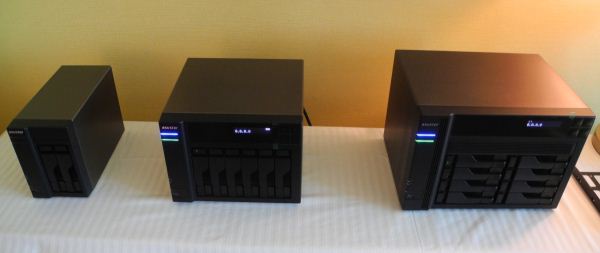




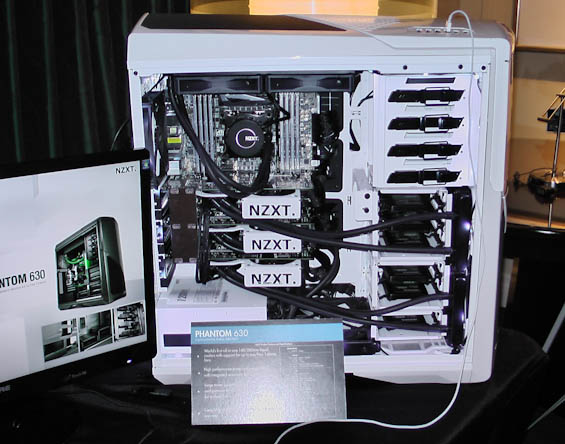

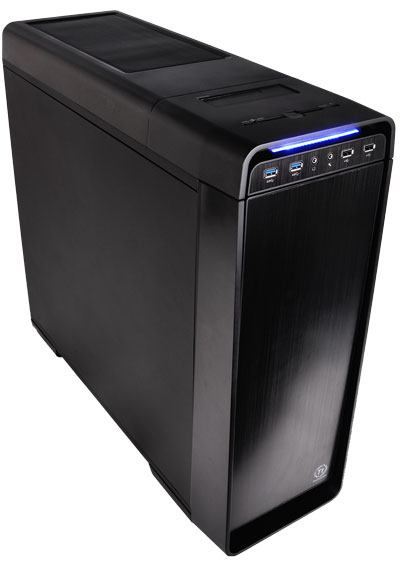

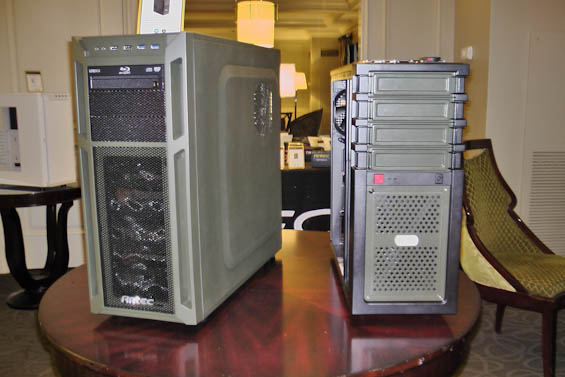
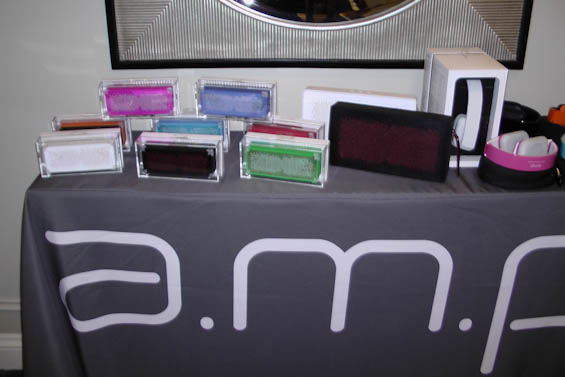
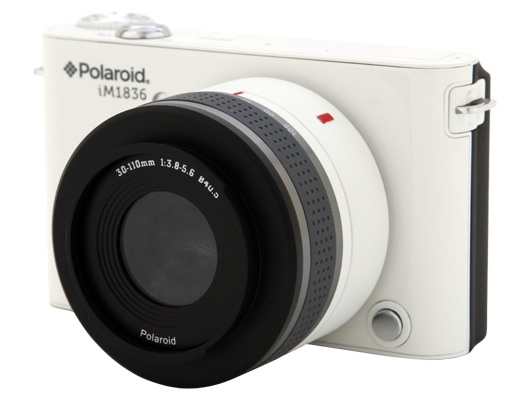
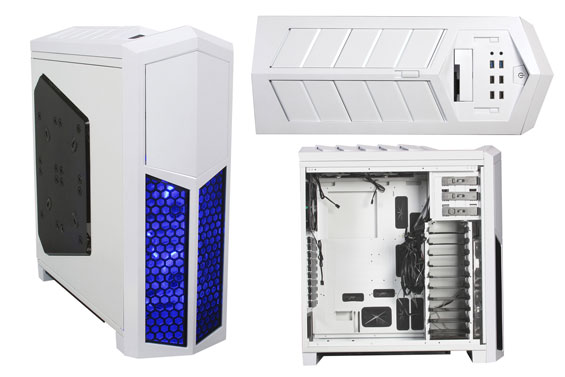
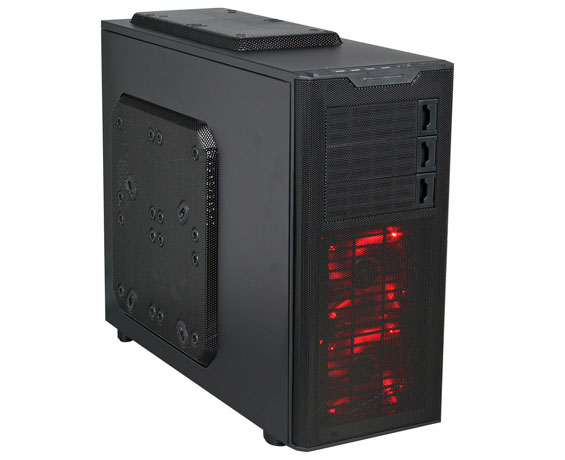
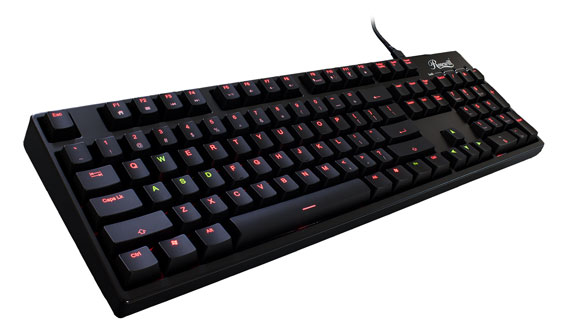
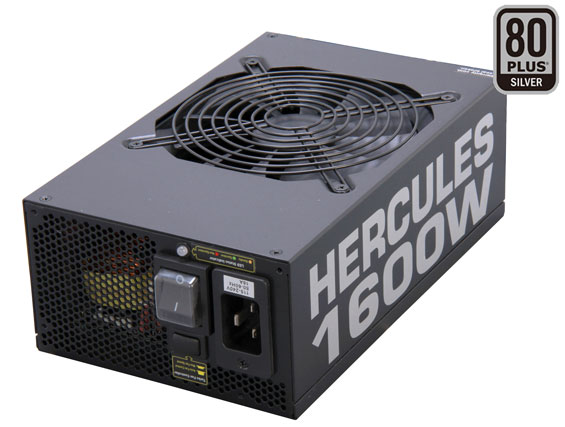
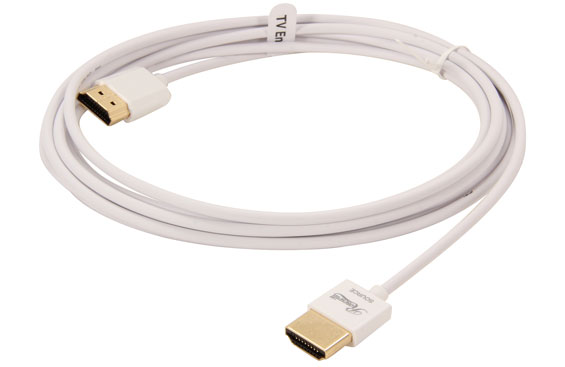
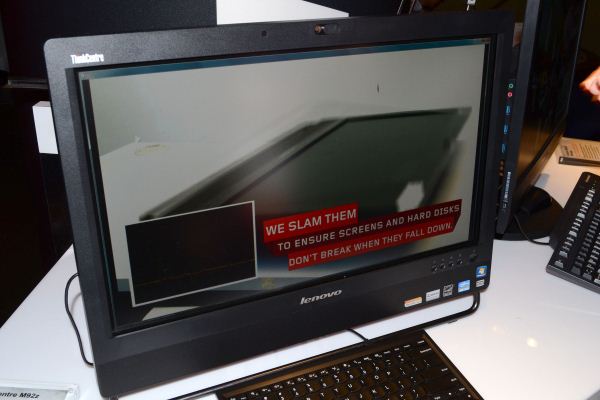



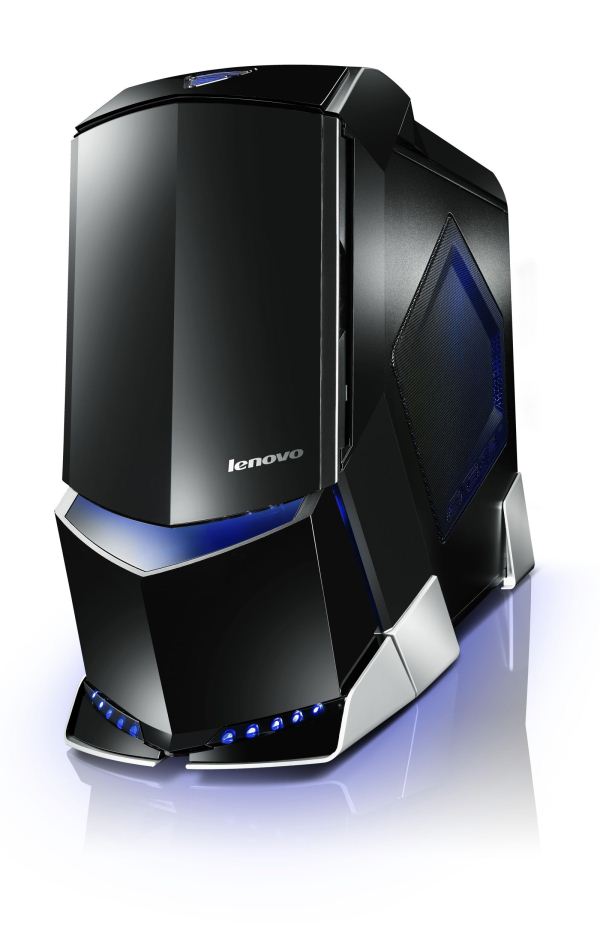






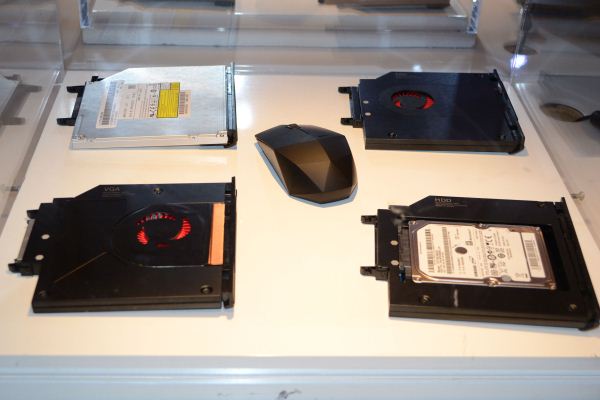



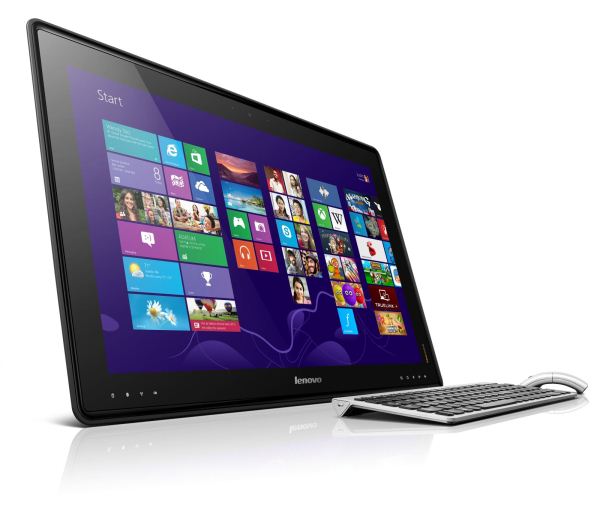






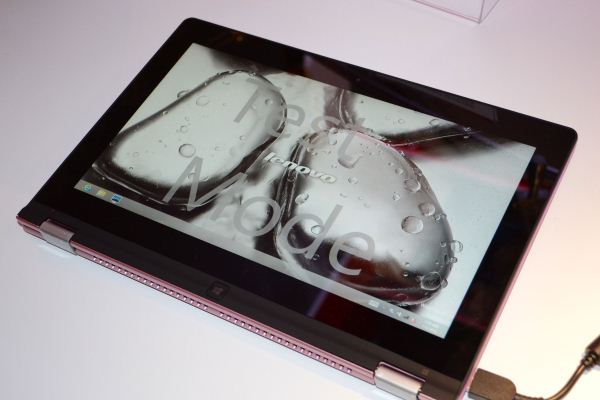




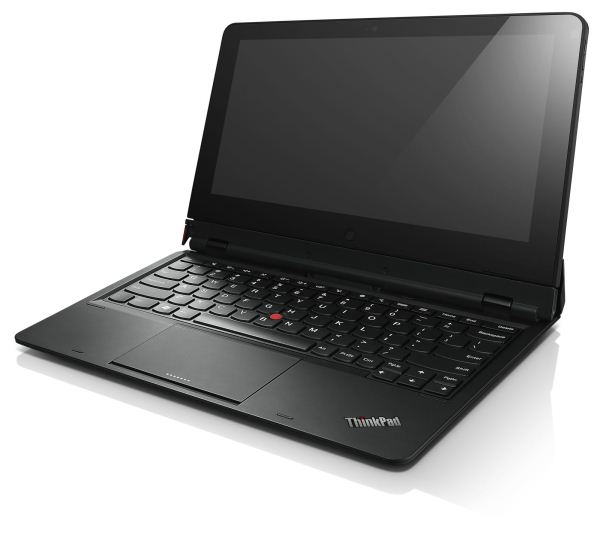






_575px.png)
_575px.png)
_575px.png)
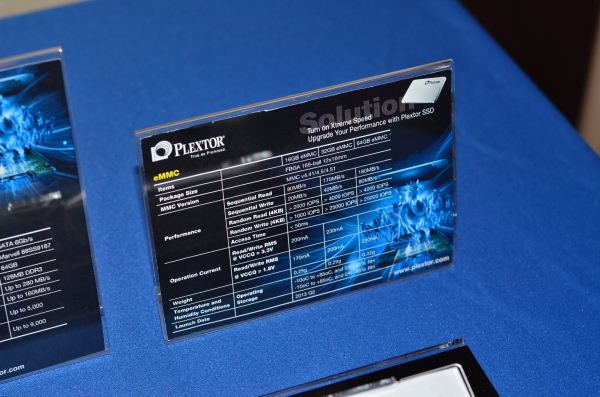
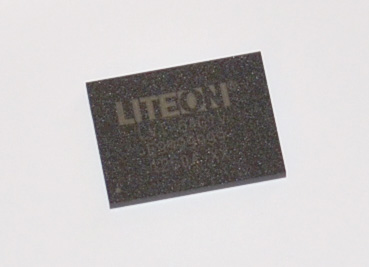



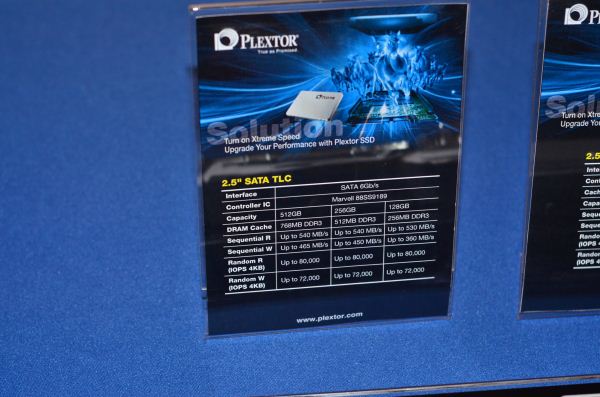
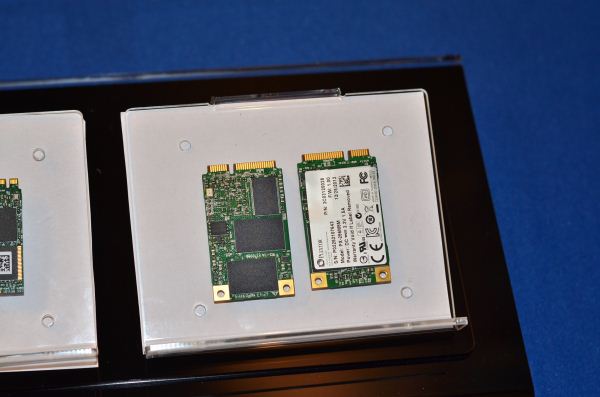
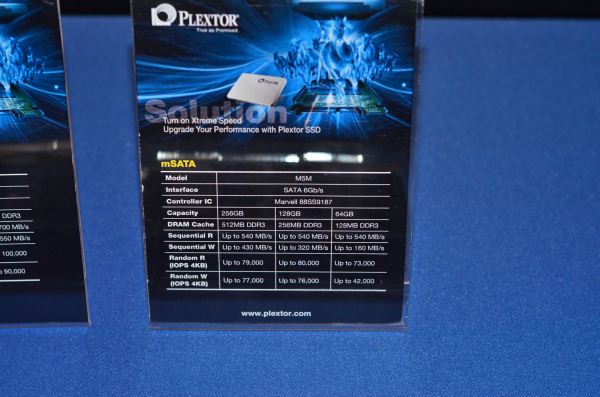
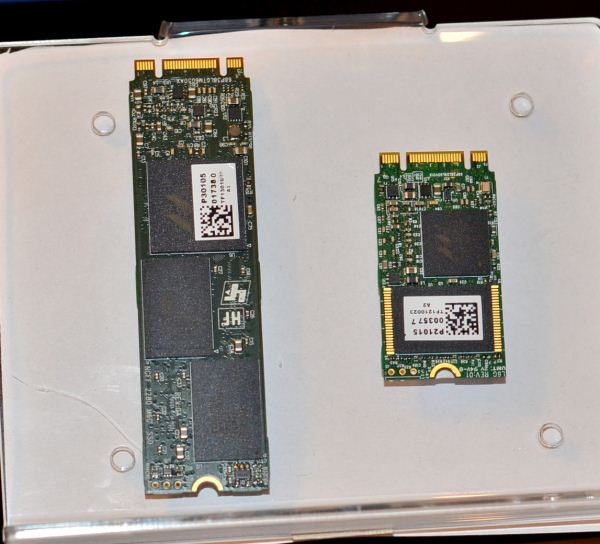
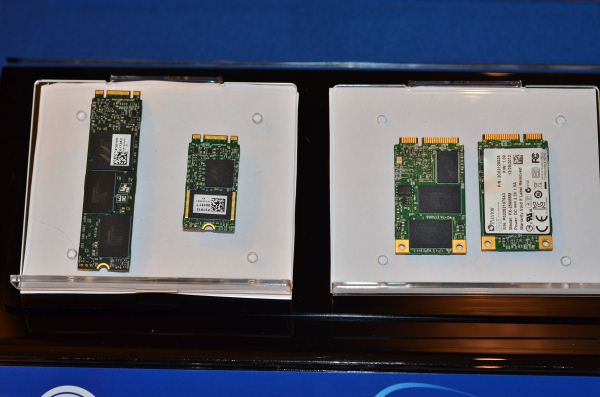


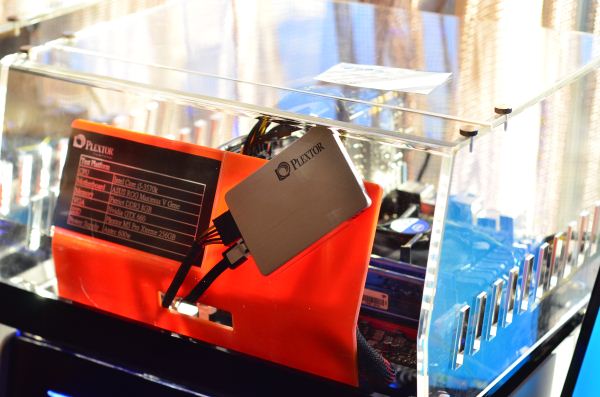
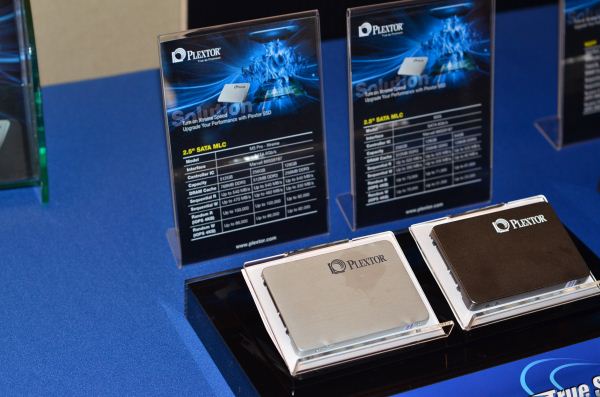


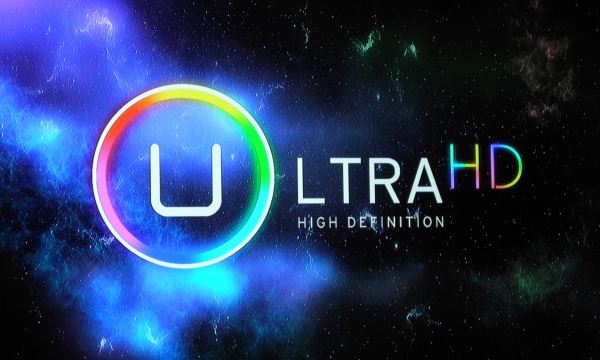
No comments:
Post a Comment